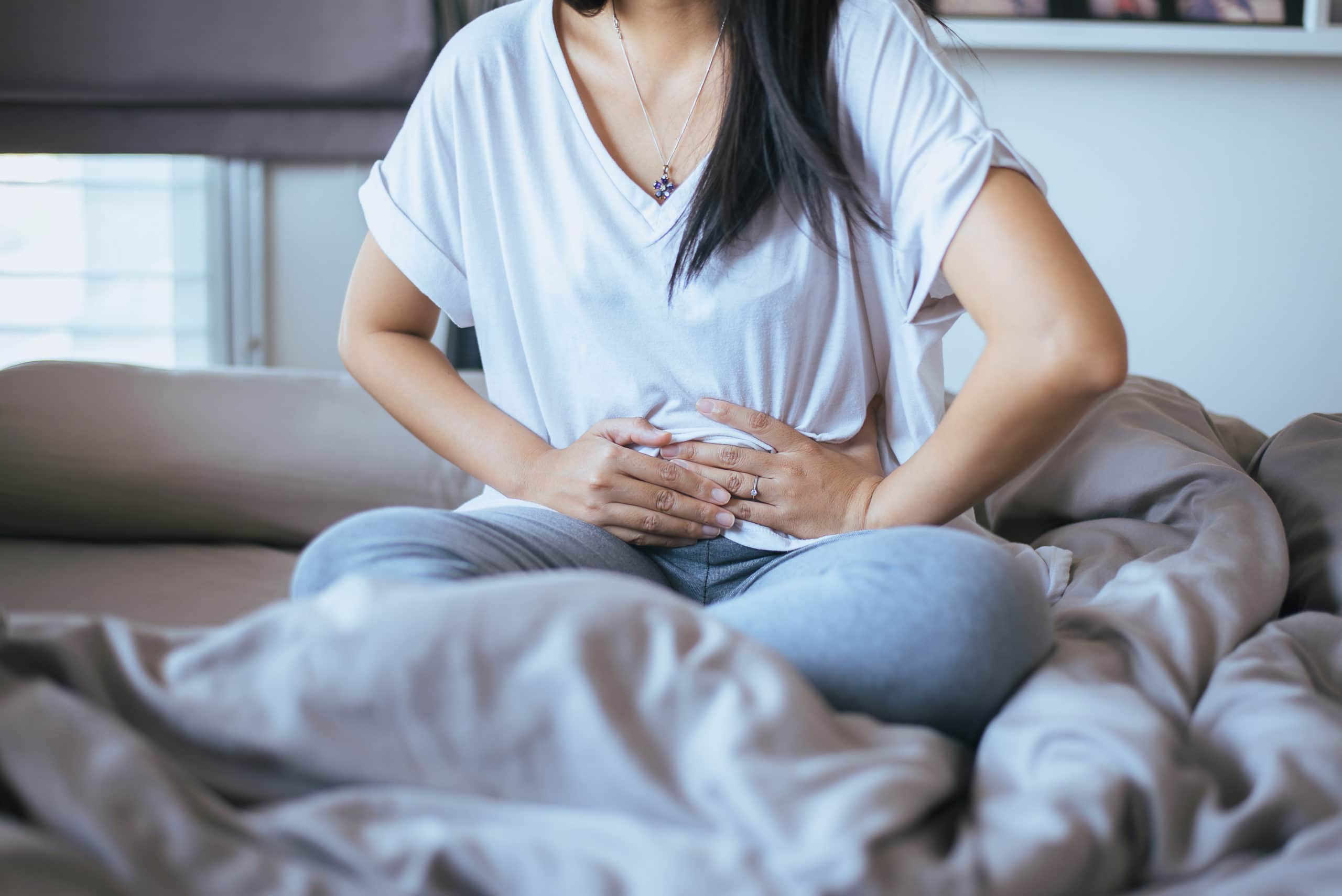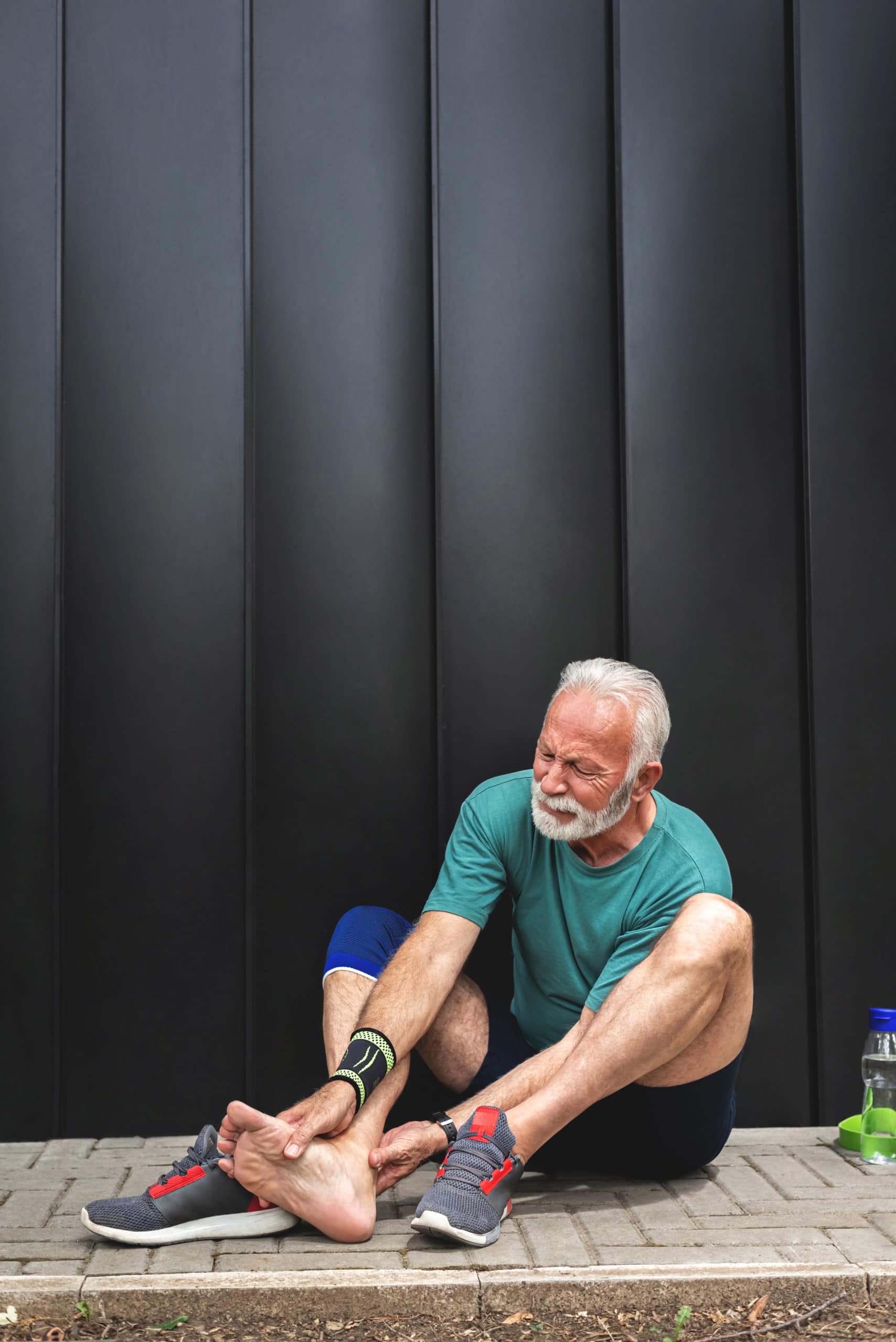What We Treat

Sciatica and Back Pain Relief
According to the CDC, 25% of US adults report having low back pain in the last 3 months. Additionally, it is the 6th most costly condition in the US and costs soar above $12 billion dollars to treat it. Sciatica and back pain has been the leading cause of years lived with disability since 1990! It is clear through decades of literature that sciatica and back pain is a HUGE problem and Dr. Google can only get you so far. Make an appointment with an Agile physical therapist and let us help!
What Is Back Pain?
Sciatica and back pain are complicated and multifactorial to diagnose and treat. Causes may vary and be in combination with repetitive strains, lack of the enough core strength, and/or workplace stress and posturing. Back pain and sciatica are different diagnoses who deserve separate, thoughtful treatment approaches. While both may present with pain radiating down the buttock and leg, the origin is different. Low back pain may also present with a dull, aching pain that may cause difficulty with prolonged standing or walking. Sciatica may present with “shooting”, “stinging”, or “burning” sensation in your back, buttocks, or down your entire leg into your foot. It takes a skilled physical therapist to differentiate not only these diagnoses, but also a myriad of other conditions. They conditions include herniated discs, arthritis, nerve entrapment, and degenerative disc disease.
How Can Physical Therapy Help With Sciatic and Back Pain?
Instead of aimlessly searching online with your symptoms, see one of our caring physical therapists who can listen to what is important to you, what you’re feeling, and how it's affecting your life. They will ask you questions about your pain, lifestyle, and activities to help differentiate diagnoses---something not easily done online. In addition, they will look at how you move, your strength, and numerous other factors to formulate shared goals and treatment plans for your sciatic and back pain. Treatment highly depends on the issues identified in the evaluation, but can consist of soft tissue massage, education, myofascial release, strengthening exercises, stretching exercises, and electrical stimulation.What Makes Agile Different In Treating Sciatic and Back Pain?
At Agile, we take a multifactorial approach to pain management. Shared decision making and evidenced based medicine are the pillars of our treatments. We try to get you active as soon as possible within the limitations of your injury and rarely rely on passive treatments. There are evidenced-based exercises you can do TODAY to help decrease your current sciatic and back pain. Make an appointment with our trained physical therapists today so you can get back to what you love doing!Request an Appointment

Neck Pain Relief
The Global Burden of Disease Study 2010 highlighted the global burden of neck pain. It can affect your everyday life and activities significantly. Stop aimlessly Googling your symptoms and find relief individualized to your needs. With people working at a computer for many hours during the day, neck pain is becoming more prevalent and physical therapy can help
Where Does Neck Pain Come From?
Neck pain can come from a variety of sources, including poor posture from using personal electronic devices (smartphones). With so many hours of looking down at our devices, overtime, it can exert strain on the muscles that elevate the head. This strain outweighs the capacity of these muscles and leads to pain and potentially headaches. Your skilled physical therapist can give you individualized exercises to help increase the capacity of these muscles. In addition, they can offer tips and suggestions to help your posture, and formulate an individualized treatment plan. Make an appointment with our trained physical therapists today!How Can Physical Therapy Help Your Neck Pain?
First, our skilled clinicians will ask you questions about your symptoms and goals. We’ll review any materials sent by your doctor (MD notes, X-rays, MRIs etc.,) and incorporate them into your care. Secondly, they will look at how you move, your strength, your range of motion, and numerous other factors to formulate a shared plan of care. Lastly, treatment may consist of soft tissue massage, education , myofascial release, strengthening exercises, stretching exercises, and electrical stimulation.What Conditions Cause Neck Pain?
Neck pain can vary in symptoms from constant, dull, achy pain to sharp stabbing pains that come on suddenly. In addition, you may experience numbness and tingling into the upper arms, headaches, loss of sleep, arm weakness, and stiffness and tightness. Certain conditions can cause neck pain including arthritis, nerve compression causing radiculopathy, joint degeneration (osteoarthritis), and whiplash.What Makes Agile Different In Treating Your Neck Pain?
At Agile, we take a multifactorial approach to pain management. Shared decision making and evidence-based medicine are the pillars of our treatments. We get you active as soon as possible within the limitations of your injury. There are exercises you can do TODAY to help decrease your current pain. Make an appointment with an Agile physical therapist today!Request an Appointment

Shoulder Pain Relief
Having pain reaching for your morning coffee cup? Can’t carry that pot across the kitchen without pain? Having trouble sleeping on your side?
Call Agile! Shoulder pain is a common injury that can manifest in dull aching pain or sharp shooting pain in your shoulder, arm or neck, sometimes for no reason! A fall, accident, or sports injury can contribute to your symptoms. Dr. Google can only help so much and then you need someone to hear your symptoms, empathetically understand your goals , and work with you to create a shared plan of care. Make an appointment with our trained physical therapists today!What Conditions Cause Shoulder Pain?
Shoulder pain can result from a variety of conditions including:● Arthritis
Arthritis can lead to a decrease in cartilage which helps cushion the shoulder in its joint. While this is a normal part of aging, only some people experience symptoms and is helped through strengthening the rotator cuff muscles to help support the joint.● Strained muscle
Taking on that weekend paint project can exceed the capacity of your muscles and result in a painful strain.● Bursitis
AFluid-filled bursae in the shoulder can become inflamed and painful due to overuse● Frozen Shoulder
Also termed adhesive capsulitis, frozen shoulder is a condition characterized by shoulder stiffness and pain that starts gradually. It can last 1-3 years and physical therapy can help with stretching and mobilizing the shoulder to maintain range of motion and manage pain.● Impingement
Shoulder muscle weakness can create painful tracking of the ball and socket shoulder joint.● Tendinitis
When your task exceeds the muscle’s capacity, it can create strain, pain, and inflammation in the surrounding tendons● Rotator Cuff Tear
Research has indicated that physical therapy is a safe and effective treatment for rotator cuff tears (sometimes even more than surgery). If you need surgery, physical therapy is a crucial aspect of recovery to gain full function.How Can Physical Therapy Help Your Shoulder Pain?
In our assessment, our trained clinicians will ask you questions about your symptoms and goals. We’ll review any materials sent by your doctor (MD notes, X-rays, MRIs etc.,) and incorporate them into your care. In addition, they will look at how you move, your strength / power , your range of motion , and numerous other factors to formulate a shared plan of care. Treatment can consist of soft tissue massage, education , myofascial release, joint mobilizations, strengthening exercises, stretching /relaxation exercises, and electrical stimulation. Your physical therapist will give you a set of home exercises to build strength to reduce your future risk of injury! Make an appointment with our trained physical therapists today!What Makes Agile Different In Treating Your Shoulder Pain?
At Agile, we take a multifactorial approach to pain management. Shared decision making and evidence-based medicine are the pillars of our treatments. We get you active as soon as possible within the limitations of your injury. There are exercises you can do TODAY to help decrease your current pain. Make an appointment with an Agile physical therapist today!Request an Appointment

Hip and Knee Pain Relief
Is going downstairs painful? Does your knee buckle without warning? Do you have sharp pain from running or doing athletic activities?
Stop wasting time googling your symptoms and taking pain medication. Get back to what you love doing with our highly trained physical therapists. They will work with you to accurately diagnose your condition and give you individualized exercises to reduce pain and improve your function. Make an appointment with our trained physical therapists today!How Can Physical Therapy Help with Your Hip & Knee Pain?
In our assessment, our empathetic clinicians will ask you questions about your symptoms and goals. We’ll review any materials sent by your doctor (MD notes, X-rays, MRIs etc.,) and incorporate them into your care. In addition, they will look at how you move, your strength, your range of motion, and numerous other factors to formulate a shared plan of care. Treatment can include soft tissue massage, education, joint mobilizations, myofascial release, strengthening exercises, stretching, and electrical stimulation.How Does Exercise Help?
Your physical therapist will give you home exercises to enhance strength and decrease pain while reducing your future risk of injury! Research supports that building strength in your hips and core can help relieve symptoms of knee pain better than just building up your knee muscles. Muscle strains, sprains, dislocations, tendinitis, arthritis, bursitis, cartilage injuries, patellofemoral pain syndrome, iliotibial band syndrome (IT Band Syndrome) and labral tears are all possible sources of your pain.Where Does Hip & Knee Pain Come From?
Knee and hip pain often stem from muscular weakness that does not have the capacity for the load. Our therapists recognize the importance of the kinetic chain (one body part affecting another) and will work with you to make sure you’re strengthening all the muscles related to your condition. Avoid medication and painful surgeries and see one of our highly skilled physical therapists today!What Makes Agile Different In Treating Your Hip and Knee Pain?
At Agile, we take a multifactorial approach to pain management. Shared decision making and evidence-based medicine are the pillars of our treatments. We get you active as soon as possible within the limitations of your injury. There are exercises you can do TODAY to help decrease your current knee pain. Make an appointment with an Agile physical therapist today!
Request an Appointment

Elbow Pain Relief
Elbow pain can affect your work, life, and participating in the activities you love, greatly impacting your quality of life. Stop aimlessly searching your symptoms on Google and see a physical therapist who can guide you to pain relief!
How Can Physical Therapy Help With Your Elbow Pain?
We use our arms all day and physical therapy can help with your pain and function. Firstly, your physical therapist will accurately diagnose your elbow issue . Secondly, they will watch how your entire body moves to determine the best, most effective exercises to prescribe. In addition, your physical therapist may use treatments such as soft tissue massage, joint mobilizations, myofascial release, strengthening exercises, stretching, education, and electrical stimulation. Your physical therapist may use elbow-specific tools such as a Flexbar or BodyBlade to accelerate tendon proliferation. Specific braces like this , may be recommended so you can continue to moderately participate in the activities you love doing. Avoid medication and painful surgeries and see one of our highly skilled physical therapists today● Elbow Bursitis
Elbow bursae helps cushion bone structures. Upon repetitive stress, it can swell leading to pain and stiffness.● Tennis Elbow (lateral epicondylitis)
Repetitive activities that your arm / elbow isn’t accustomed to can cause inflammation and pain on the outside of the elbow.● Golfer’s Elbow (medial epicondylitis)
Continued and new stressors on the inside of your elbow can cause inflammation and pain in your daily activities.● Strain/Sprains
Too much load, too quickly can cause a strain/sprain of the muscles around the elbow, resulting in pain with your activities of daily living.What Makes Agile Different In Treating Your Elbow Pain?
At Agile, we take a multifactorial approach to pain management. Shared decision making and evidence-based medicine are the pillars of our treatments. We get you active as soon as possible within the limitations of your elbow injury. There are exercises you can do TODAY to help decrease your current elbow pain. Make an appointment with an Agile physical therapist today!Request an Appointment

Dizziness & Vertigo Relief
Dizziness can be significantly impactful in your life, causing you the inability to complete daily tasks. The vestibular system often causes dizziness, which includes parts of the inner ear and brain. These parts process the sensory information involved with controlling balance and eye movements. If there is dysfunction in these processing areas, vestibular disorders can result. Vestibular disorders can also result from or made worse by genetic or environmental conditions, or occur for unknown reasons.
What Is Dizziness, Vertigo, & Benign Paroxysmal Positional Vertigo?
Dizziness affects about 15% to over 20% of adults seen yearly in large population based studies . It has been reported that 35% of US adults aged 40 years and older had evidence of balance dysfunction. BPPV (Benign paroxysmal positional vertigo) is the most common vestibular disorder, and may account for up to one-third of vertigo presentations. Benign paroxysmal positional vertigo can occur at any age and is most common in the 5th-6th decades of life . Vestibular migraine is the second most common cause of dizziness (6-9% prevalent). Dizziness and vertigo are the most frequent persistent symptoms post MVA with an hreincidence of 25% . Make an appointment with our trained physical therapists today!Who Can Benefit From VRT (Vestibular Rehabilitation Therapy) for their Dizziness and Vertigo?
The most commonly diagnosed vestibular disorders include benign paroxysmal positional vertigo, labyrinthitis or vestibular neuritis, vestibular migraine, concussion, and cervicogenic dizziness. Vestibular rehabilitation therapy for the above conditions, along with balance training leads to:- decreased fall risk
- improved balance
- decreased dizziness
- increased body strength
- improved ability to stabilize vision
- improved neck motion
- return to prior level of movement/function
- increased confidence to maintain balance
- return to athletic performance
What To Expect In A Vestibular Physical Therapy Visit for your Dizziness and Vertigo?
The vestibular physical therapist will conduct a comprehensive evaluation and perform tests using specialized equipment to view eye movements. A vestibular individualized treatment plan may include:- Balance retraining and balance strategies which helps the body to regain confidence in activities of daily living and work.
- Sensory organization techniques and gaze stabilization strategies to help the body use its senses to overcome dizziness and decreased balance
- Habituation exercises: helping the body to decrease dizziness by repeatedly exposing it to a stimulus.
- Canalith repositioning maneuver: a maneuver performed by the physical therapist to manipulate the calcium crystals found in the inner ear that cause dizziness.
- Individualized home exercises based on your specific needs and goals.
Request an Appointment

Poor Posture Pain Relief
What is Poor Posture Pain Relief?
Neck and back pain are extremely common! For a long time, doctors, physical therapists, and your family members have told us that “fixing your posture” is the solution to this problem. In recent years, the terms “tech neck” and “text neck” are used to tell people that their neck pain is caused by looking down at their smartphones. While this phenomenon has not been supported by research, it’s enough to make people worried about their posture! However, even after years of trying to fix their posture, many people will still feel daily discomfort. Physical therapy has advanced past “fixing posture” to help with pain. At Agile, we’ll help you develop a plan that is more than just telling you to sit up straight!Does Poor Posture Cause Pain?
People are told that they have pain because they sit poorly at their desk all day. But what if it was the lack of variety and not the posture itself that was the issue? A lot of people spend their days only doing one thing with their posture - sitting and looking straight ahead or down. Even when you’re not working, you may relax with activities that create the same postures as your work! Our bodies crave variety, and having any single posture for the entire day is a recipe for feeling sore and achy.How Can Physical Therapy Help With Posture-related pain?
An Agile physical therapist can help you make your daily postures work better for you! Simple ergonomic adjustments make it easier and more comfortable to get work done. Implementing “movement snacks” and routines to shake up your posture throughout your day are essential parts of keeping your out of poor posture for long periods of time. Outside of your work day, your physical therapist can help you build and maintain an exercise routine. Getting both cardiovascular exercise and strength training into your week can make a huge difference in counteracting long days of sitting! Building whole-body strength and moving in a variety of postures can be powerful in keeping neck and back pain at bay. Finally, improving your sleep and building stress coping strategies is essential in helping you feel (and work!) your best.How Do I Get Perfect Posture?
While your mother may want you to stand straighter in family photos, there’s no such thing as “perfect posture.” The way that our bodies look is a reflection of how we routinely move. Our bodies adapt to our activities to make it easier to do them! It can be a problem, however, if you only have one posture in your day.Even people with objectively “perfect” posture can have back pain if they never do anything else!
Agile physical therapists help you move in new ways that tailor to your strengths and weaknesses. No matter your natural posture, it’s possible to feel and perform well!What Makes Agile Different In Treating Posture-related Pain?
At Agile, we understand that helping you address your pain is more than telling you to stand up straighter! We work with you to implement evidence-based strategies in your life, in the way that best reflects your goals. Our job is to get you moving and enjoying your life as soon as possible!. There are exercises you can do TODAY to help decrease your current pain. Make an appointment with an Agile physical therapist today!Request an Appointment

Pre-Surgical Physical Therapy
Get back to your favorite sport or activity with Agile Physical Therapy! We know that recovering from a major surgery can be physically and emotionally challenging. Our physical therapists are here for you. Research reports that preoperative strengthening can not only make a significant difference in how fast and well you recover, but also a cost savings in post-operative needs. Pre-surgical physical therapy is performing strengthening prior to your surgery. Make an appointment with our trained physical therapists today!
How Can Physical Therapy Help With Getting Ready For Surgery?
Physical therapists have their Doctorate in Physical Therapy, justifying their substantial medical knowledge that includes how surgery affects a person’s body. Additionally, they understand the limitations of surgery so you can be pushed in the appropriate way to quicken your recovery and return to sport. While you might be pushed, our physical therapists will not allow you to do any exercise that may slow your recovery or worsen your condition. Furthermore, the benefits of pre-surgical physical therapy are expansive and include:- Improve Surgical Outcomes
- Circulation
- Prepare for surgical procedures, both mentally and physically
- Preventing blood clots
- Posture
- Balance
- Self-care training
- Reduced risk of infection
- Reduce hospital stay length
- Gait training
- Strength
- Flexibility
- Pain control/management
- Electrical Stimulation
- Heat and Ice application
- Ultrasound
What Surgeries Can Physical Therapy Help With?
- Meniscectomy
- Ligament repair (ACL/PCL/MCL/LCL)
- Arthroscopic debridement
- Total/partial knee replacement
- Tendon repair
- Fractures
- Bunionectomy
- Bone spur removal
- Fractures or Fusions
- Ligament (ATFL) repair
- Achilles tendon repair
- Total hip replacement
- Arthroscopic Hip Debridement
- Labral or tendon repair
- Microdiscectomy
- Laminectomy
- Fusion
- Disc replacement
- Spinal Cord Surgery
- Labral Repair
- Rotator Cuff Surgery
- Tendon rupture repair
- Post-traumatic fracture internal fixation
- Nerve relocation
What Makes Agile Different In Pre-Surgical Physical Therapy?
At Agile, we take a multifactorial approach to pain management. Shared decision making and evidence-based medicine are the pillars of our treatments. We get you active as soon as possible within the limitations of your injury. There are exercises you can do TODAY to help decrease your current pain. Make an appointment with an Agile physical therapist today!Request an Appointment

Post-Surgical Physical Therapy
Get back to your favorite sport or activity with Agile Physical Therapy! We know that recovering from a major surgery can be physically and emotionally challenging and our physical therapist are here for you. Research reports that postoperative strengthening for your injury can make a significant difference in how fast and well you recover. Post-surgical physical therapy is performing physical therapy after your surgery. It has been well-known in research to promote faster and better recoveries. Make an appointment with our trained physical therapists today!
How Can Physical Therapy Help After Surgery?
Physical therapists have their Doctorate in Physical Therapy, justifying their substantial medical knowledge that includes how surgery affects a person’s body. Additionally, they understand the limitations of surgery so you can be pushed in the appropriate way to quicken your recovery and return to sport . While you might be pushed, our PTs will not allow you to do any exercise that may slow your recovery or worsen your condition. Furthermore, research supports the benefits of post-surgical physical therapy are expansive and include- Improve Surgical Outcomes
- Circulation
- Prepare for surgical procedures, both mentally and physically
- Preventing blood clots
- Posture
- Balance
- Self-care training
- Reduced risk of infection
- Reduce hospital stay length
- Gait training
- Strength
- Flexibility
- Pain control/management
What Surgeries Can Physical Therapy Help With And How?
What do you love doing? As a matter of fact, strengthening and mobility, while following your doctor’s protocol for movement, is an important part of having a safe, expedient, and comprehensive recovery. Your doctor may recommend one of the following treatments as apart of your post-surgical physical therapy.- Electrical Stimulation
- Heat and Ice application
- Ultrasound
- Meniscectomy
- Ligament repair (ACL/PCL/MCL/LCL)
- Arthroscopic debridement
- Total/partial knee replacement
- Tendon repair
- Fractures
- Bunionectomy
- Bone spur removal
- Fractures or Fusions
- Ligament (ATFL) repair
- Achilles tendon repair
- Total hip replacement
- Arthroscopic Hip Debridement
- Labral or tendon repair
- Microdiscectomy
- Laminectomy
- Fusion
- Disc replacement
- Spinal Cord Surgery
- Labral Repair
- Rotator Cuff Surgery
- Tendon rupture repair
- Post-traumatic fracture internal fixation
- Nerve relocation
What Makes Agile Different In Post-Surgical Physical Therapy?
At Agile, we take a multifactorial approach to pain management. Shared decision making and evidence-based medicine are the pillars of our treatments. We get you active as soon as possible within the limitations of your injury. There are exercises you can do TODAY to help decrease your current pain. Make an appointment with an Agile physical therapist today!Request an Appointment

Sports Injuries
Professional athlete? Weekend warrior? Adult soccer league?
However you “sport” we got your back when someone illegally slide tackles into your leg. Our skilled therapists love treating athletes because THEY are athletes. They know the technicalities of your sport to help strengthen the right muscles, to get you back stronger and faster than before. Whatever your injury, physical therapy can help!How Can Physical Therapy Help With Your Sports Injury?
In our assessment, our athletic clinicians will ask you questions about your symptoms, your goals, and what’s important to you. We’ll review any materials sent by your doctor (MD notes, X-rays, MRIs etc.,) and incorporate them into your care. In addition, they will look at how you move, your strength / power , your range of motion , and numerous other factors to formulate a shared plan of care. Make an appointment with our trained physical therapists today!How Do These Sports Injuries Occur?
Sports injuries range from getting hit hard, overuse, contact, non-contact , wearing the wrong footwear , or a sudden collision. Sports injuries classify as an injury sustained while doing something athletic (could be lifting weights or a HIIT class). Shin splints or shin pain, strained or “pulled” muscles, knee pain, or joint sprain are commonly sustained during sport. Our physical therapists are highly trained to differentiate diagnosis and integrate their sport knowledge into your treatment plan. Don’t give up your weekend HIIT session and let us help! Google gives generic exercises, but our therapists give you an individualized exercise program . It will keep you engaged and motivated because it’s tailored to your lifestyleWhat Makes Agile Different In Treating Your Sports Injury?
At Agile, we take a multifactorial approach to pain management. Shared decision making and evidence-based medicine are the pillars of our treatments. We get you active as soon as possible within the limitations of your injury. There are exercises you can do TODAY to help decrease your current pain. Make an appointment with an Agile physical therapist today!Request an Appointment

Pelvic Pain Relief
Pelvic pain is an all-encompassing term that refers to a variety of conditions including:
- Pain during or after pregnancy (postpartum)
- Endometriosis
- Pain following abdominal surgery
- Painful sexual intercourse (dyspareunia)
- Diastasis recti
- Pelvic organ prolapse
- Bladder pain
- Constipation
- Urinary Incontinence
- Pudendal neuralgia
What Is A Pelvic Floor?
Muscles, tendons, and ligaments make up your pelvic floor that help:- Support your pelvic organs against gravity
- Stabilize your core due to their muscular attachments to your hips and pelvis
- Sexually achieve penetration and orgasm
- Sphincterically, they allow for muscle contraction to avoid urinary leakage and also relax to allow for a bowel movement
- Sump-pump , functions help to avoid swelling and pelvic congestion due to their close approximation with the pelvic lymph nodes
How Can Pelvic Physical Therapy Help?
Your pelvic floor physical therapist will do an extensive history and physical examination, asking you your limitations, goals, and medical history. In addition, they will investigate the strength of your pelvic floor and surrounding musculature, range of motion, scar tissue, and a host of other factors to create a shared plan of care. Treatment can consist of soft tissue massage, education , myofascial release, strengthening exercises, stretching/relaxation exercises, biofeedback , and electrical stimulation . Our trained and empathetic pelvic floor physical therapists have specialized training to treat pregnant individuals and will prescribe appropriate exercises for your stage of pregnancy.What Makes Agile Different In Treating Your Pelvic Pain Or Dysfunction?
At Agile, we take a multifactorial approach to pain management. Shared decision making and evidence-based medicine are the pillars of our treatments. We get you active as soon as possible within the limitations of your injury. There are exercises you can do TODAY to help decrease your current pelvic pain. Make an appointment with an Agile physical therapist today!Request an Appointment

Headaches and Migraines Relief
According to the World Health Organization, headaches are extremely common and up to 1 adult in 20 has a headache everyday! You are not alone. Physical therapy is a conservative, long-lasting approach to headache management that will endure beyond what pain medications can provide
Where Do Headaches and Migraines Come From?
Headaches can stem from many different sources including the neck and posture , stress, and muscle weakness can all contribute to the frequency and duration of your headaches. Whether your headaches are short term and temporary or long term and chronic (migraines), Agile can get you back to what you love doing . In our assessment, our highly skilled clinicians will ask you questions about your daily life and goals. We’ll review any materials sent by your doctor (MD notes, X-rays, MRIs etc.,) and incorporate them into your care. In addition, they will look at how you move, your upper back / neck strength, your range of motion, and numerous other factors to formulate a shared plan of care. Make an appointment with our highly skilled physical therapists today!What Types of Headaches and Migraines Are There?
There’s a lot of different types of headaches , but some of the most common are:- Tension Headaches
- Migraine Headache
- Cluster Headaches
- Cervicogenic Headaches
What Contributes To Headaches and Migraines?
Contributing factors to these headaches include poor posture, stress, repetitive motions, weaknesses, muscle strain or injury such as whiplash, psychological stress , and concussions. Stop aimlessly searching your headaches online. Instead, come in to see one of our skilled physical therapists who can listen to your symptoms and goals. They will help differentiate the right diagnosis and individualized treatment for your headache. Headache relief treatment can consist of soft tissue massage, myofascial release, education, strengthening exercises, and stretching/relaxation exercises. Make an appointment with our highly skilled physical therapists today!What Makes Agile Different In Treating Your Headache and Migraines?
At Agile, we take a multifactorial approach to pain management. Shared decision making and evidence-based medicine are the pillars of our treatments. We get you active as soon as possible within the limitations of your headaches. There are exercises you can do TODAY to help decrease your current headache. Make an appointment with an Agile physical therapist today!Request an Appointment

Foot and Ankle Pain Relief
We use our feet and ankle everyday and pain from this area can be life-impacting. Consequently, you might avoid stairs, walking, or getting outside with your kids or grandkids. Our skilled physical therapists will perform a thorough examination of your body in conjunction with your goals and needs to determine the best plan of care. Get back to what you love doing with our highly trained physical therapists that can accurately diagnose your condition and give you individualized exercises to reduce pain and improve your function. Make an appointment with our trained physical therapists today!
How Can Physical Therapy Help with Your Foot & Ankle Pain?
Physical therapy can help but firstly, accurately diagnosing your ankle or foot issue is critical. Secondly, your physical therapist will watch how your entire body moves to determine the best, most effective exercises to prescribe. Lastly, treatment can consist of soft tissue massage, joint mobilizations, myofascial release, strengthening exercises, education, stretching, and electrical stimulation. Ankle-specific tools such as a balance board or Airex pad may be used to help accelerate stability. Your physical therapist may recommend specific shoes, footwear, or orthotics .How Does Foot & Ankle Pain Occur?
The ankle and foot are complicated joints with many bones, tendons, ligaments, and muscles all interacting for their complex functions . Because of this complexity, foot and ankle pain can develop from arthritis, overuse, muscle or tendon strain or sprain, tarsal tunnel syndrome (nerve sensitivity or inflammation in the foot), fractures, plantar fasciitis , metatarsalgia, tendinitis , and arch pain. Our physical therapists can identify weaknesses all along the kinetic chain (one body part affecting another) and give you exercises to target those areas. For example, research has shown that hip strengthening exercises are beneficial to the management and prevention of recurrent ankle instability. Avoid medication and painful surgeries and see one of our highly skilled physical therapists todayWhat Makes Agile Different In Treating Your Foot & Ankle Pain?
At Agile, we take a multifactorial approach to pain management. Shared decision making and evidence-based medicine are the pillars of our treatments. We get you active as soon as possible within the limitations of your foot and ankle injury. There are exercises you can do TODAY to help decrease your current foot and ankle pain. Make an appointment with an Agile physical therapist today!Request an Appointment

Cancer Physical Therapy
Facing cancer is an emotionally and physically challenging journey. Agile Physical Therapy is here to support you through this difficult time with our specialized cancer physical therapy services. Our empathetic and trained physical therapists understand the unique challenges posed by cancer treatments, offering personalized and evidence-based care to help you regain strength, manage symptoms, and enhance your overall well-being.
How Can Cancer Physical Therapy Help With Your Symptoms?
Agile Physical Therapy recognizes the importance of maintaining physical activity during cancer treatment to reduce fatigue and preserve function, as recommended by the American Cancer Society. Our physical therapists, being movement experts with a medical background, are well-suited to assist in this regard. We collaborate with your healthcare team to create a tailored treatment plan, focusing on:- Decreasing pain and fatigue
- Building strength, endurance , and power
- Managing swelling and side effects
- Regaining your range of motion
- Promoting circulation and blood flow
- Engaging in daily activities
Expectations at Your Physical Therapy Appointment
Our physical therapists prioritize understanding you as an individual. They inquire about your medical history, previous injuries, and details of your cancer treatments. A thorough physical assessment follows, observing your movement and gently testing strength and mobility. Our expert therapists ensure that exercises are tailored to your comfort level. They discuss findings with you, creating a customized home exercise program and offering additional elements like manual therapy, education, advice, and activity modification.Cancer Physical Therapy for Symptom Management
Cancer-related fatigue is a common challenge, affecting 80-100% of people with cancer. Agile's empathetic physical therapists navigate the complexities of chemotherapy, radiation, and surgery, helping you combat fatigue and regain strength through a slow and steady approach. Individualized exercise programs are designed to decrease pain and fatigue, build strength, manage swelling, regain range of motion, promote circulation, and facilitate engagement in daily activities.Are Physical Therapists Qualified to Treat Those With Cancer?
In our assessment, your specialized physical therapist will ask you questions about your symptoms and goals. In addition, they will look at how you move, your strength, your range of motion, and numerous other factors to formulate a shared plan of care. Our specialized physical therapists hold a Doctorate in Physical Therapy, ensuring a deep understanding of how surgery and cancer treatment impact the body. justifying their substantial medical knowledge . Additionally, they will work with your doctor to make sure they understand everything about your particular case (reports, MRIs, X-rays etc.). Our physical Therapists understand the limitations of surgery and cancer so you can be pushed in the appropriate way to quicken your recovery and return to life. While you might be pushed, our caring physical therapists will not allow you to do any exercise that may slow your recovery or cause more fatigue. Cancer physical therapy is individualized to your particular case.What Makes Agile Different In Treating Your Cancer Symptoms?
At Agile, we take a multifactorial approach to cancer management. Shared decision making and evidence-based medicine are the pillars of our treatments. We try to get you active as soon as possible within the limitations of your cancer and treatment. Get back to what you love doing faster. Make an appointment with our caring and trained physical therapists todayRequest an Appointment

Transgender Health
One million Americans identify as transgender. There’s a growing body of data supporting the health inequities experienced by them. Transgender individuals identify with a gender that is different than their sex assigned at birth, as well as those whose gender indentity does not conform to binary gender categories. These individuals may choose to have procedures, interventions, and surgeries to transition to a gender that matches their identity. At Agile, our pelvic and gender health certified specialists are here to help you along your transgender health journey. We have specially trained physical therapists that not only understand the sensitivity around these issues, but also have the knowledge and training that can help you recover quickly and fully. Make an appointment with our empathetic and trained physical therapists today
What Surgeries Can Our Physical Therapists Help With?
Gender affirming surgeries include facial reconstruction, top surgeries, aimed at chest reconstruction, and bottom surgeries which reconstruct genitalia. Male-to-female and female-to-male surgeries include:- Orchiectomies
- Vulvoplasties
- Vaginoplasties
- Phalloplasties
- Metoidioplasty
- Mastectomies
- Breast augmentation
How Can Physical Therapy Help With Your Transgender Health Journey?
Pelvic and gender health physical therapy can help! In our assessment, your pelvic and gender health physical therapist will ask you questions about your symptoms and goals. In addition, they will look at how you move, your strength, range of motion, and numerous other factors to formulate a shared plan of care. Physical therapists have their Doctorate in Physical Therapy, justifying their substantial medical knowledge that includes how transition surgery affects a person’s body. They will work with your doctor to make sure they understand everything about your particular case (reports, MRIs, X-rays etc.). They understand the limitations of surgery so you can be pushed in the appropriate way to quicken your recovery. While you might be pushed, our caring physical therapists will not allow you to do any exercise that may slow your recovery or worsen your condition.What Makes Agile Physical Therapy Different?
At Agile, we take a multifactorial approach to transgender health management and we understand the emotional and physical impacts this journey can have on an individual. Shared decision making and evidence-based medicine are the pillars of our treatments. There are evidence-based exercises you can do TODAY to help decrease your current symptoms, get back to being YOURSELF faster. Make an appointment with our trained physical therapists today .Request an Appointment
